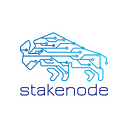Step-by-Step: How to Nominate STAKENODE validator nodes on KUSAMA Network

KUSAMA is a “canary network” for Polkadot, an early unaudited release of the code that is available first and holds real economic value. For developers, Kusama is a proving ground for runtime upgrades, on-chain governance, and parachains.
It is a separate network with its own native KSM token, which is different from the Polkadot network and its native DOT token. With KSM, you can validate, nominate validators, bond parachains, pay for interop message passing, and vote on governance referenda. Check out more in the Kusama user guide.
Setup: Things You Will Need
The first step is to go to Polkadot’s UI and create your account with the “add account” button.



Once your account is created, make sure that you’re connected to the Kusama network by going to the Settings tab and Selecting Kusama(Relay Chain) as your address prefix.
To keep your assets safe while staking, it is recommended that you create 2 accounts:
- Stash account: This account is where you keep your tokens and its only function is to safely hold the funds, so we recommend you keep it offline.
- Controller account: This is the account that you use to manage the tokens held by the stash account. You’ll use this account to start nominating validators and also to end your nominations
You can find more about Accounts creation in the Kusama guide
To nominate validators you need to bond the KSM held in your stash account.

Instructions to Nominate on Kusama
Connect to a Network
- Log into the Polkadot JS UI.
- Under the Settings tab, Choose Kusama from the dropdown if you want to stake your KSMs and choose Polkadot if you want to stake your DOTs.

Bond Your Tokens & Nominate
Staking on Polkadot and Kusama consists of bonding tokens followed by nominating one or more validators with the bonded tokens.
- Open the Polkadot UI, Go to the Staking tab, and click on the Account Actions tab.
- Click the “+ Nominator” button to bond your tokens for staking.

- Specify your stash and controller accounts from the dropdowns. In the value bonded field, put how many tokens you want to bond.
- Choose where to deposit your staking rewards from the “Payment Destination” dropdown.
In our case, we elected to deposit our staking rewards to the stash account and to increase the amount at stake. This will allow us to compound our earnings and maximize our return. However, you should choose the option that best suits your needs


You can filter and search STAKENODE_POWERNODE or our validator node adress: CuiwESD49ggEAQ9131Gt948xw11PiWQNXkuR2R2Jt7rYSck
- Hit the “Bond & Nominate” button to proceed to the next step.
- Fill in the password of the stash account and click the “Sign and Submit” button to execute the bonding transaction.

If your nomination was successful, you will a green “finalized” checkmark in the upper-right-hand corner of your screen, like the image below:

Congratulations! You have now staked your tokens and are helping to support the security of the Kusama network while at the same time earning staking rewards.
Feel free to follow STAKENODE on Twitter and our website, or contact us via mail if You have any questions.
We are happy to help walk you through the nomination process and all proof-of-stake (POS) aspects or answer any other questions you have.
https://twitter.com/stakenode_dev
https://t.me/stakenode_support
email: support@stakenode.dev
